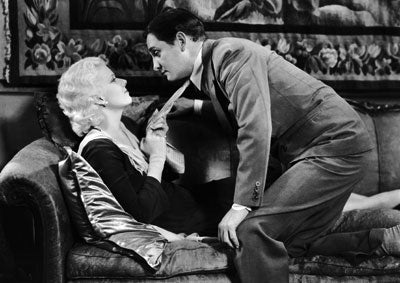Download a sample list of available titles and additional research resources at UCLA in PDF format.
From the beginning of American motion picture history, a debate has raged over film's role in promoting social and moral values. In the late 1920s, increased local and state regulation of film exhibition, calls for federal censorship and a series of Hollywood scandals united industry leaders in an effort to fend off threats to the industry's autonomy and profit-making ability.
In 1930 the Motion Picture Production Code was developed in order to appease Hollywood's critics. The Code was a self-regulatory measure which outlined specific dos and don'ts concerning what should appear on American movie screens. The Code began to be strictly enforced in 1934 when all films were required to have certificates of approval issued by the Production Code Administration.
Many motion picture historians have argued that Hollywood sound films produced prior to enforcement of the Code were not only more provocative but also offered more diversity than those produced while the Code was in place (1934-1966). Notorious examples include Baby Face (Alfred E. Green, 1933), Paramount's The Story of Temple Drake (Stephen Roberts, 1933) and Fox's Common Clay (Victor Fleming, 1930).
Some film scholars have even attributed the appearance of homogenized portrayals of women, sexuality, race and religion to the imposition of the Code. Mae West's career at Paramount Pictures, for example, illustrates the effects of the Production Code's enforcement. Her popularity in films such as She Done Him Wrong (1933), I'm No Angel (1933) and Belle of the Nineties (1934) was derived in part from her characters' predilection for double entendres, sexual innuendo and implied promiscuity. Following the Production Code crackdown, films such as Goin' to Town (1935) and Klondike Annie (1936) feature a considerably sanitized, and some would argue, stifled version of the Mae West persona.
To arrange onsite research viewing access, please contact the Archive Research and Study Center (ARSC).







